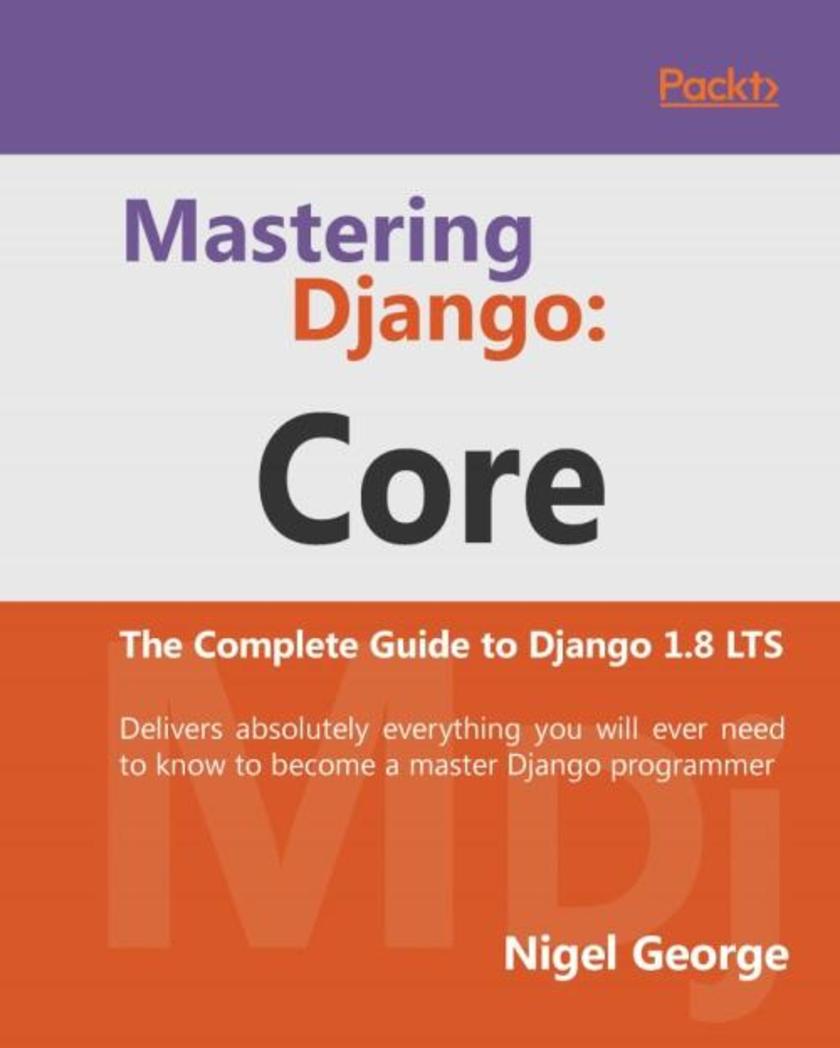
Mastering Django: Core
¥90.46
Delivers absolutely everything you will ever need to know to become a master Django programmer About This Book Gain a complete understanding of Django—the most popular, Python-based web framework in the world Gain the skills to successfully designing, developing, and deploying your app This book is packaged with fully described code so you can learn the fundamentals and the advanced topics to get a complete understanding of all of Django’s core functions Who This Book Is For This book assumes you have a basic understanding of the Internet and programming. Experience with Python or Django would be an advantage, but is not necessary. It is ideal for beginner to intermediate programmers looking for a fast, secure, scalable, and maintainable alternative web development platform to those based on PHP, Java, and dotNET. What You Will Learn Use Django to access user-submitted form data, validate it, and work with it Get to know advanced URLconf tips and tricks Extend Django’s template system with custom code Define models and use the database API to create, retrieve, update, and delete records Fully extend and customize the default implementation as per your project’s needs Test and deploy your Django application Get to know more about Django’s session, cache Framework, and middleware In Detail Mastering Django: Core is a completely revised and updated version of the original Django Book, written by Adrian Holovaty and Jacob Kaplan-Moss - the creators of Django. The main goal of this book is to make you a Django expert. By reading this book, you’ll learn the skills needed to develop powerful websites quickly, with code that is clean and easy to maintain. This book is also a programmer’s manual that provides complete coverage of the current Long Term Support (LTS) version of Django. For developers creating applications for commercial and business critical deployments, Mastering Django: Core provides a complete, up-to-date resource for Django 1.8LTS with a stable code-base, security fixes and support out to 2018. Style and approach This comprehensive step-by-step practical guide offers a thorough understanding of all the web development concepts related to Django. In addition to explaining the features of Django, this book provides real-world experience on how these features fit together to build extraordinary apps.
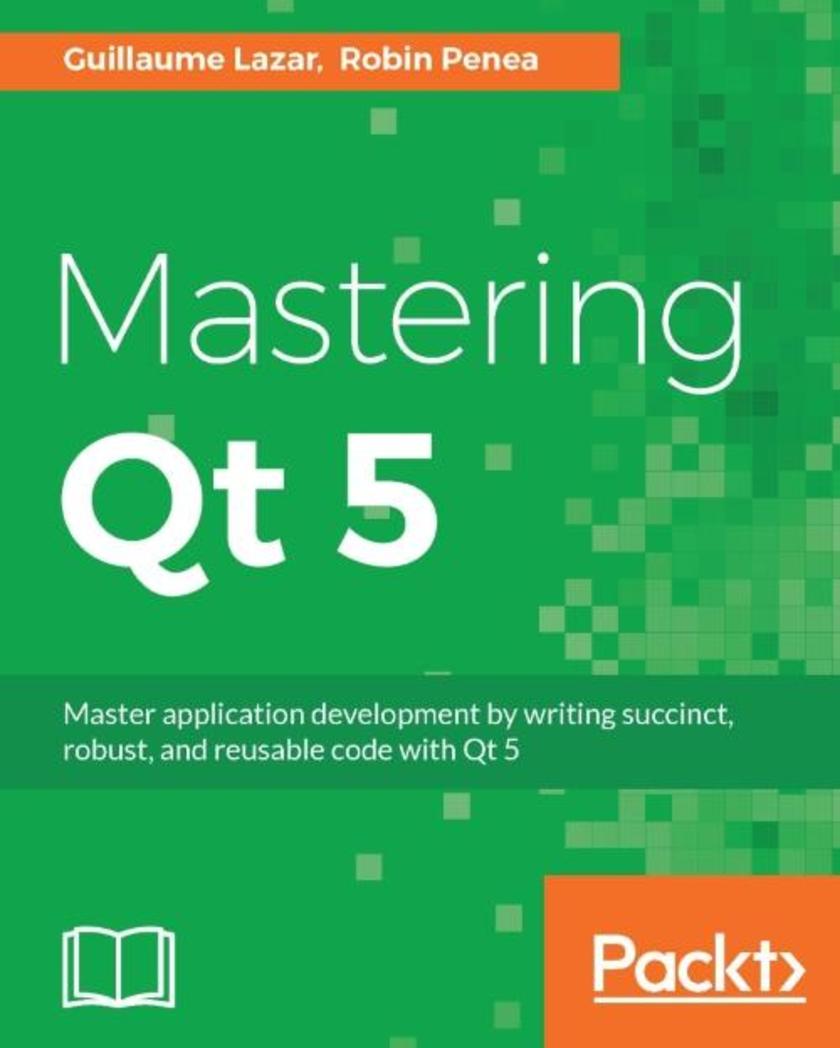
Mastering Qt 5
¥80.65
Master application development by writing succinct, robust, and reusable code with Qt 5 About This Book Unleash the power of Qt 5 with C++14 Integrate useful third-party libraries such as OpenCV Package and deploy your application on multiple platforms Who This Book Is For This book will appeal to developers and programmers who would like to build GUI-based applications. Knowledge of C++ is necessary and the basics of Qt would be helpful. What You Will Learn Create stunning UIs with Qt Widget and Qt Quick Develop powerful, cross-platform applications with the Qt framework Design GUIs with the Qt Designer and build a library in it for UI preview Handle user interaction with the Qt signal/slot mechanism in C++ Prepare a cross-platform project to host a third-party library Build a Qt application using the OpenCV API Use the Qt Animation framework to display stunning effects Deploy mobile apps with Qt and embedded platforms In Detail Qt 5.7 is an application development framework that provides a great user experience and develops full-capability applications with Qt Widgets, QML, and even Qt 3D. This book will address challenges in successfully developing cross-platform applications with the Qt framework. Cross-platform development needs a well-organized project. Using this book, you will have a better understanding of the Qt framework and the tools to resolve serious issues such as linking, debugging, and multithreading. Your journey will start with the new Qt 5 features. Then you will explore different platforms and learn to tame them. Every chapter along the way is a logical step that you must take to master Qt. The journey will end in an application that has been tested and is ready to be shipped. Style and approach This is an easy-to-follow yet comprehensive guide to building applications in Qt. Each chapter covers increasingly advanced topics, with subjects grouped according to their complexity as well as their usefulness. Packed with practical examples and explanations, Mastering Qt contains everything you need to take your applications to the next level.
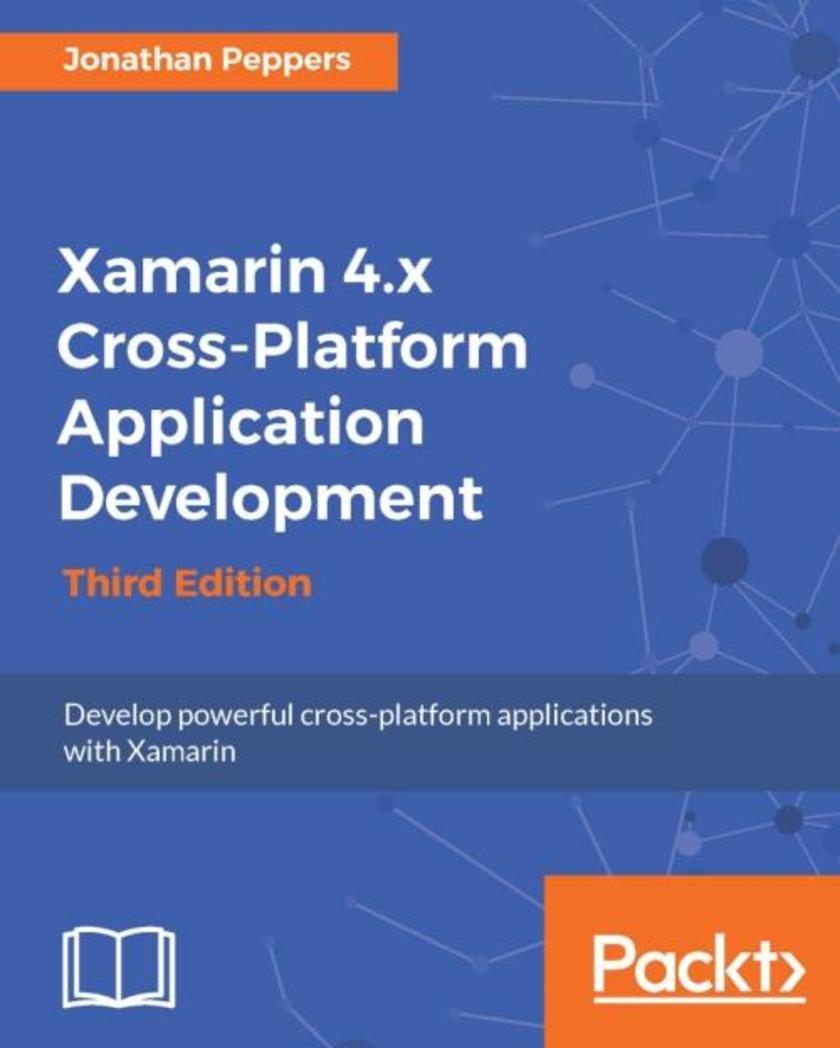
Xamarin 4.x Cross-Platform Application Development - Third Edition
¥80.65
Develop powerful cross-platform applications with Xamarin About This Book Write native cross-platform applications with Xamarin Design user interfaces that can be shared across Android, iOS, and Windows Phone using Xamarin.Forms Practical cross-platform development strategies Who This Book Is For If you are a developer with experience in C# and are just getting into mobile development, this is the book for you. This book will give you a head start with cross-platform development and will be the most useful to developers who have experience with desktop applications or the web. What You Will Learn Apple’s MVC design pattern The Android activity lifecycle Share C# code across platforms and call native Objective-C or Java libraries from C# Create a real web service back end in Windows Azure using SQL Azure as database storage Set up third-party libraries such as NuGet and Objective Sharpie in many different ways, and port a desktop .NET library to Xamarin Use Xamarin.Mobile for camera, contacts, and location In Detail Xamarin is a leading cross-platform application development tool used by top companies such as Coca-Cola, Honeywell, and Alaska Airlines to build apps. Version 4 features significant updates to the platform including the release of Xamarin.Forms 2.0 and improvements have been made to the iOS and Android designers. Xamarin was acquired by Microsoft so it is now a part of the Visual Studio family. This book will show you how to build applications for iOS, Android, and Windows. You will be walked through the process of creating an application that comes complete with a back-end web service and native features such as GPS location, camera, push notifications, and other core features. Additionally, you’ll learn how to use external libraries with Xamarin and Xamarin.Forms to create user interfaces. This book also provides instructions for Visual Studio and Windows. This edition has been updated with new screenshots and detailed steps to provide you with a holistic overview of the new features in Xamarin 4. Style and approach This book offers a tutorial style approach to teach you the skills required to develop end-to-end cross-platform solutions with Xamarin.
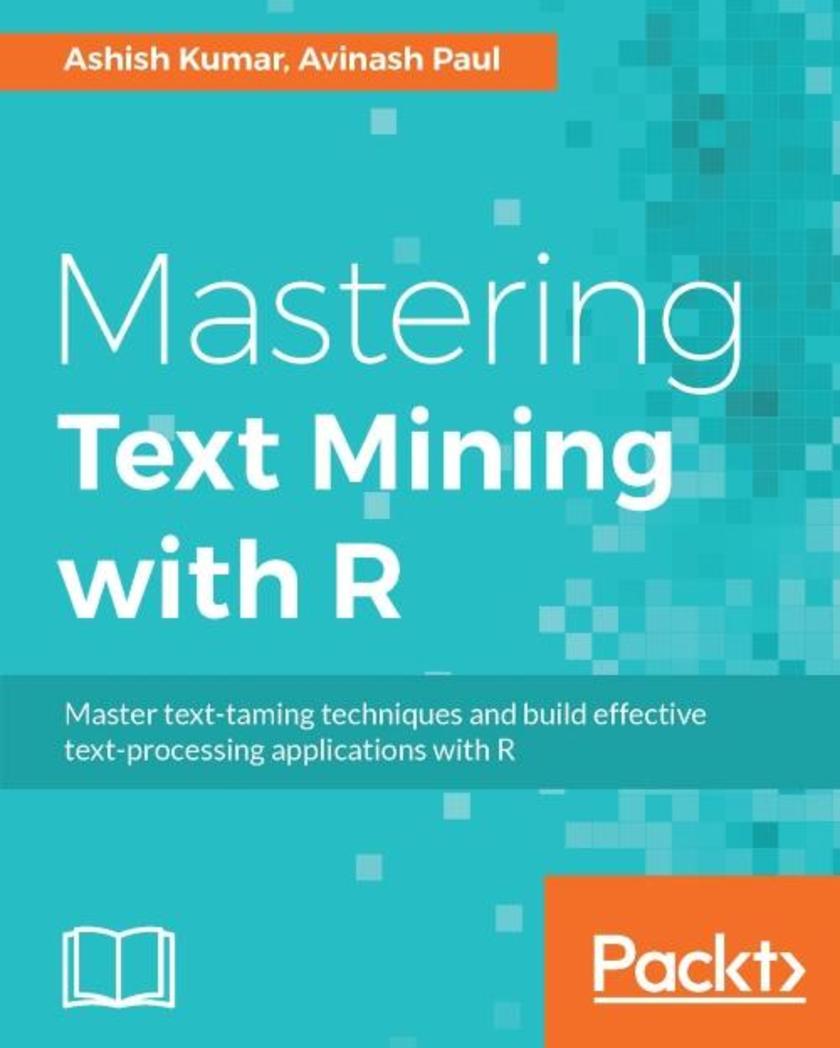
Mastering Text Mining with R
¥71.93
Master text-taming techniques and build effective text-processing applications with R About This Book Develop all the relevant skills for building text-mining apps with R with this easy-to-follow guide Gain in-depth understanding of the text mining process with lucid implementation in the R language Example-rich guide that lets you gain high-quality information from text data Who This Book Is For If you are an R programmer, analyst, or data scientist who wants to gain experience in performing text data mining and analytics with R, then this book is for you. Exposure to working with statistical methods and language processing would be helpful. What You Will Learn Get acquainted with some of the highly efficient R packages such as OpenNLP and RWeka to perform various steps in the text mining process Access and manipulate data from different sources such as JSON and HTTP Process text using regular expressions Get to know the different approaches of tagging texts, such as POS tagging, to get started with text analysis Explore different dimensionality reduction techniques, such as Principal Component Analysis (PCA), and understand its implementation in R Discover the underlying themes or topics that are present in an unstructured collection of documents, using common topic models such as Latent Dirichlet Allocation (LDA) Build a baseline sentence completing application Perform entity extraction and named entity recognition using R In Detail Text Mining (or text data mining or text analytics) is the process of extracting useful and high-quality information from text by devising patterns and trends. R provides an extensive ecosystem to mine text through its many frameworks and packages. Starting with basic information about the statistics concepts used in text mining, this book will teach you how to access, cleanse, and process text using the R language and will equip you with the tools and the associated knowledge about different tagging, chunking, and entailment approaches and their usage in natural language processing. Moving on, this book will teach you different dimensionality reduction techniques and their implementation in R. Next, we will cover pattern recognition in text data utilizing classification mechanisms, perform entity recognition, and develop an ontology learning framework. By the end of the book, you will develop a practical application from the concepts learned, and will understand how text mining can be leveraged to analyze the massively available data on social media. Style and approach This book takes a hands-on, example-driven approach to the text mining process with lucid implementation in R.

Salesforce CRM - The Definitive Admin Handbook - Fourth Edition
¥107.90
Learn how to successfully administer, build, and manage Salesforce CRM and Salesforce mobile solutions using real-world and best practice techniques About This Book See the latest best practice Salesforce administration principles, gain real-world advice, and understand critical design considerations to set up and customize Salesforce CRM This is a pragmatic guide to the key functions of customizing and setting up the application for enterprise security, user and data management, process automation, analytics, and mobile features Step-by-step navigation and de*ions of the features of Salesforce CRM platform and clear guidance on the customization and administration of the application Identify what is covered to create your own improved study guide for the certified administrator examination Who This Book Is For This book is for administrators who want to develop and strengthen their Salesforce CRM skills in the areas of configuration and system management. Whether you are a new administrator or a more experienced professional, this book will enhance your knowledge and understanding of the features of Salesforce CRM. What You Will Learn Manage and administer user records and password policies Configure and control the various organization-wide user interface features in Salesforce CRM Set up and maintain users, profiles, and permission sets and administer appropriate security and login access mechanisms Apply organization security Understand the capabilities of the Salesforce CRM sharing model Create, delete, and customize fields, page layout, and list views for custom and standard objects Find out how Apex and Visualforce coding can be used in Salesforce CRM Implement the mechanisms for data management Discover the tools to import, update, transfer, and mass delete data In Detail Salesforce CRM’s Winter ’17 release offers a host of new features for CRM designed to transform your sales and marketing requirements. With this comprehensive guide to implementing Salesforce CRM, administrators of all levels can easily acquire deep knowledge of the platform. The book begins by guiding you through setting up users and the security settings and then progresses to configuration, data management, and data analytics. We swiftly move on to the setting up of organization wide features that affect the look and feel of the application. Process automation and approval mechanisms are covered next, along with the functional areas of Sales Cloud, Service Cloud, Marketing Cloud, and Salesforce Chatter. This book details Salesforce CRM system administration in a practical way and is an invaluable reference for both new administrators and experienced professionals. At the end of the book, techniques to further enhance the system and improve the return on investment Salesforce mobile apps and mobile administration are covered, along with Salesforce Adoption Manager. Every chapter is complete with a section containing example questions of the type that you might encounter in the certification examination. Style and approach This book takes a straightforward, no-nonsense approach to working with the Salesforce CRM platform. Filled with examples and use cases, the book presents the facts along with seasoned advice and real-world examples to ensure you have all the resources you need to become a more informed Salesforce Administrator.
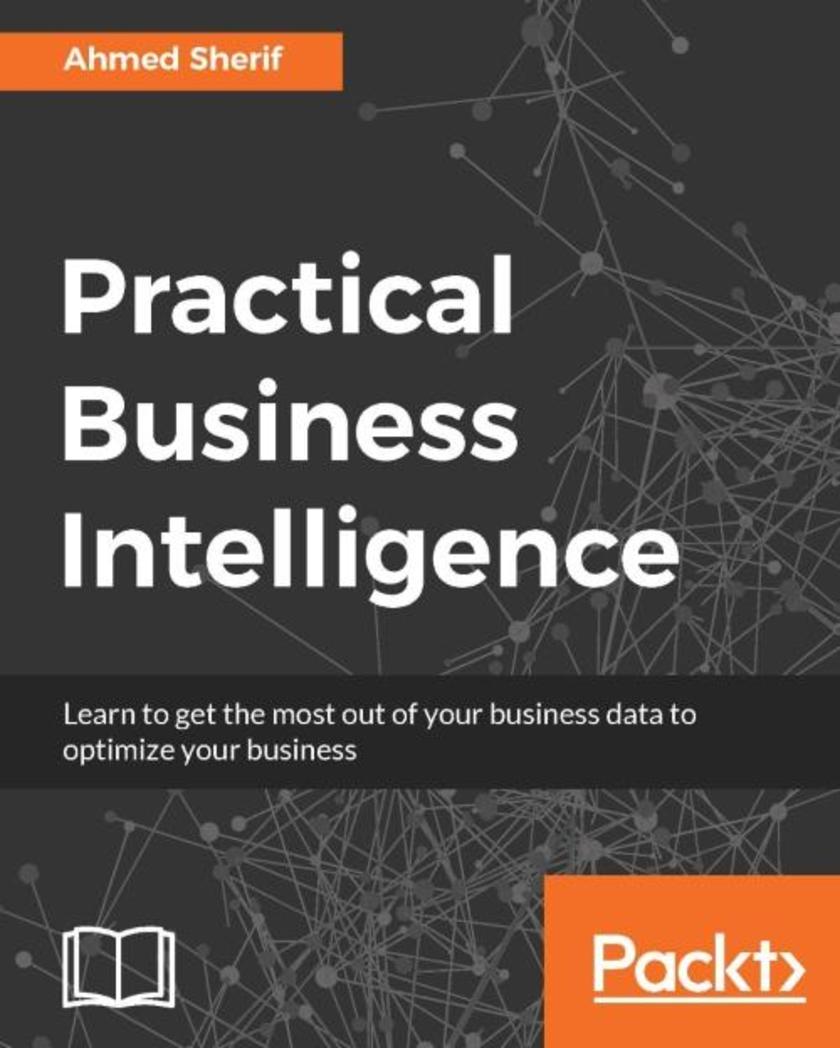
Practical Business Intelligence
¥90.46
Learn to get the most out of your business data to optimize your business About This Book This book will enable and empower you to break free of the shackles of spreadsheets Learn to make informed decisions using the data at hand with this highly practical, comprehensive guide This book includes real-world use cases that teach you how analytics can be put to work to optimize your business Using a fictional transactional dataset in raw form, you’ll work your way up to ultimately creating a fully-functional warehouse and a fleshed-out BI platform Who This Book Is For This book is for anyone who has wrangled with data to try to perform automated data analysis through visualizations for themselves or their customers. This highly-customized guide is for developers who know a bit about analytics but don't know how to make use of it in the field of business intelligence. What You Will Learn Create a BI environment that enables self-service reporting Understand SQL and the aggregation of data Develop a data model suitable for analytical reporting Connect a data warehouse to the analytic reporting tools Understand the specific benefits behind visualizations with D3.js, R, Tableau, QlikView, and Python Get to know the best practices to develop various reports and applications when using BI tools Explore the field of data analysis with all the data we will use for reporting In Detail Business Intelligence (BI) is at the crux of revolutionizing enterprise. Everyone wants to minimize losses and maximize profits. Thanks to Big Data and improved methodologies to analyze data, Data Analysts and Data Scientists are increasingly using data to make informed decisions. Just knowing how to analyze data is not enough, you need to start thinking how to use data as a business asset and then perform the right analysis to build an insightful BI solution. Efficient BI strives to achieve the automation of data for ease of reporting and analysis. Through this book, you will develop the ability to think along the right lines and use more than one tool to perform analysis depending on the needs of your business. We start off by preparing you for data analytics. We then move on to teach you a range of techniques to fetch important information from various databases, which can be used to optimize your business. The book aims to provide a full end-to-end solution for an environment setup that can help you make informed business decisions and deliver efficient and automated BI solutions to any company. It is a complete guide for implementing Business intelligence with the help of the most powerful tools like D3.js, R, Tableau, Qlikview and Python that are available on the market. Style and approach Packed with real-world examples, this pragmatic guide helps you polish your data and make informed decisions for your business. We cover both business and data analysis perspectives, blending theory and practical hands-on work so that you perceive data as a business asset.
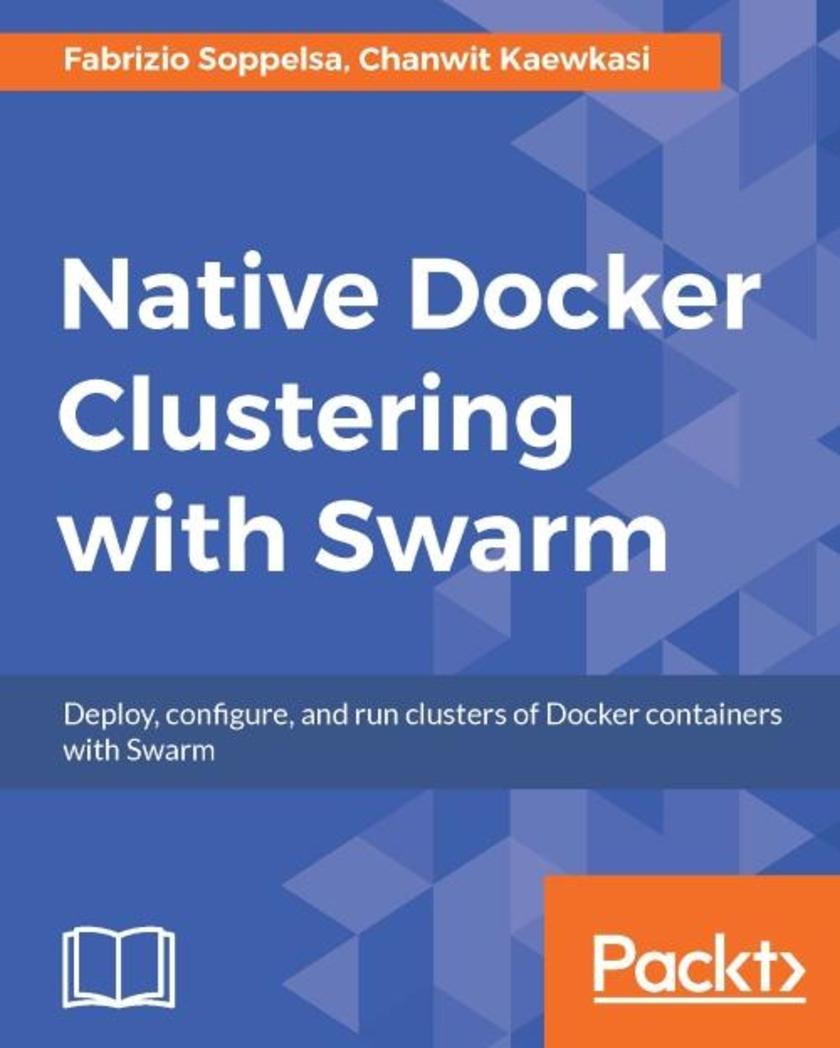
Native Docker Clustering with Swarm
¥80.65
Deploy, configure, and run clusters of Docker containers with Swarm About This Book Get to grips with Docker Swarm, one of the key components of the Docker ecosystem. Optimize Swarm and SwarmKit features for scaling massive applications through containers. Learn about Docker’s scheduling tricks, high availability, security, and platform scalability. Who This Book Is For If you are a Linux admin or a Docker user who wants to natively manage Docker clusters, then this is the book for you. What You Will Learn Create and manage Swarm Mode clusters of any size Get a backstage view of the biggest Swarms ever built : Swarm2k and Swarm3k, with their 2,300 and 4,700 nodes Discovery mechanisms and Raft Deploy your containerized app on Swarm Administer Swarm clusters on AWS, Azure, and DigitalOcean Integrate Flocker volumes with Swarm Create and manage Swarms on OpenStack Magnum In Detail Docker Swarm serves as one of the crucial components of the Docker ecosystem and offers a native solution for you to orchestrate containers. It’s turning out to be one of the preferred choices for Docker clustering thanks to its recent improvements. This book covers Swarm, Swarm Mode, and SwarmKit. It gives you a guided tour on how Swarm works and how to work with Swarm. It describes how to set up local test installations and then moves to huge distributed infrastructures. You will be shown how Swarm works internally, what’s new in Swarmkit, how to automate big Swarm deployments, and how to configure and operate a Swarm cluster on the public and private cloud. This book will teach you how to meet the challenge of deploying massive production-ready applications and a huge number of containers on Swarm. You'll also cover advanced topics that include volumes, scheduling, a Libnetwork deep dive, security, and platform scalability. Style and approach A comprehensive guide that covers all aspects of Docker Swarm from setup to customization.
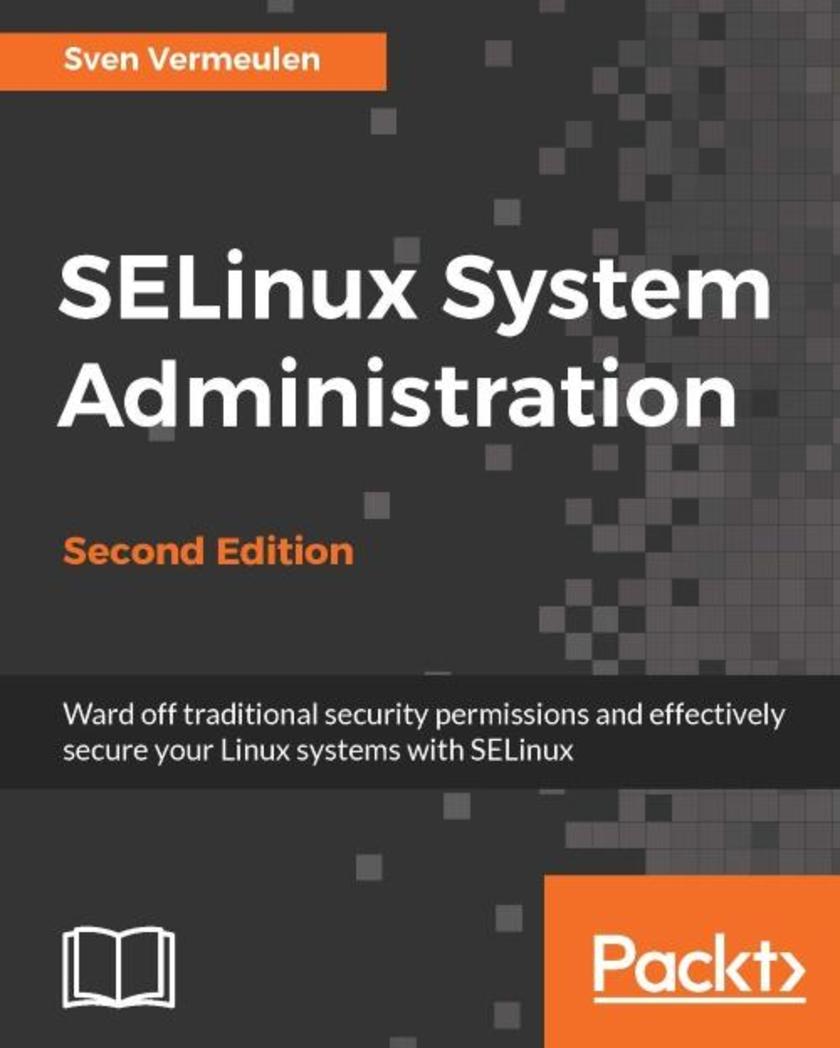
SELinux System Administration - Second Edition
¥90.46
Ward off traditional security permissions and effectively secure your Linux systems with SELinux About This Book Leverage SELinux to improve the secure state of your Linux system A clear approach to adopting SELinux within your organization Essential skills and techniques to help further your system administration career Who This Book Is For This book is for Linux administrators who want to control the secure state of their systems. It’s packed with the latest information on SELinux operations and administrative procedures so you’ll be able to further harden your system through mandatory access control (MAC) – a security strategy that has been shaping Linux security for years. What You Will Learn Analyze SELinux events and selectively enable or disable SELinux enforcement Manage Linux users and associate them with the right role and permission set Secure network communications through SELinux access controls Tune the full service flexibility by dynamically assigning resource labels Handle SELinux access patterns enforced through the system Query the SELinux policy in depth In Detail Do you have the crucial job of protecting your private and company systems from malicious attacks and undefined application behaviorAre you looking to secure your Linux systems with improved access controlsLook no further, intrepid administrator! This book will show you how to enhance your system’s secure state across Linux distributions, helping you keep application vulnerabilities at bay. This book covers the core SELinux concepts and shows you how to leverage SELinux to improve the protection measures of a Linux system. You will learn the SELinux fundamentals and all of SELinux’s configuration handles including conditional policies, constraints, policy types, and audit capabilities. These topics are paired with genuine examples of situations and issues you may come across as an administrator. In addition, you will learn how to further harden the virtualization offering of both libvirt (sVirt) and Docker through SELinux. By the end of the book you will know how SELinux works and how you can tune it to meet your needs. Style and approach This book offers a complete overview of SELinux administration and how it integrates with other components on a Linux system. It covers the majority of SELinux features with a mix of real life scenarios, de*ions, and examples. This book contains everything an administrator needs to customize SELinux.
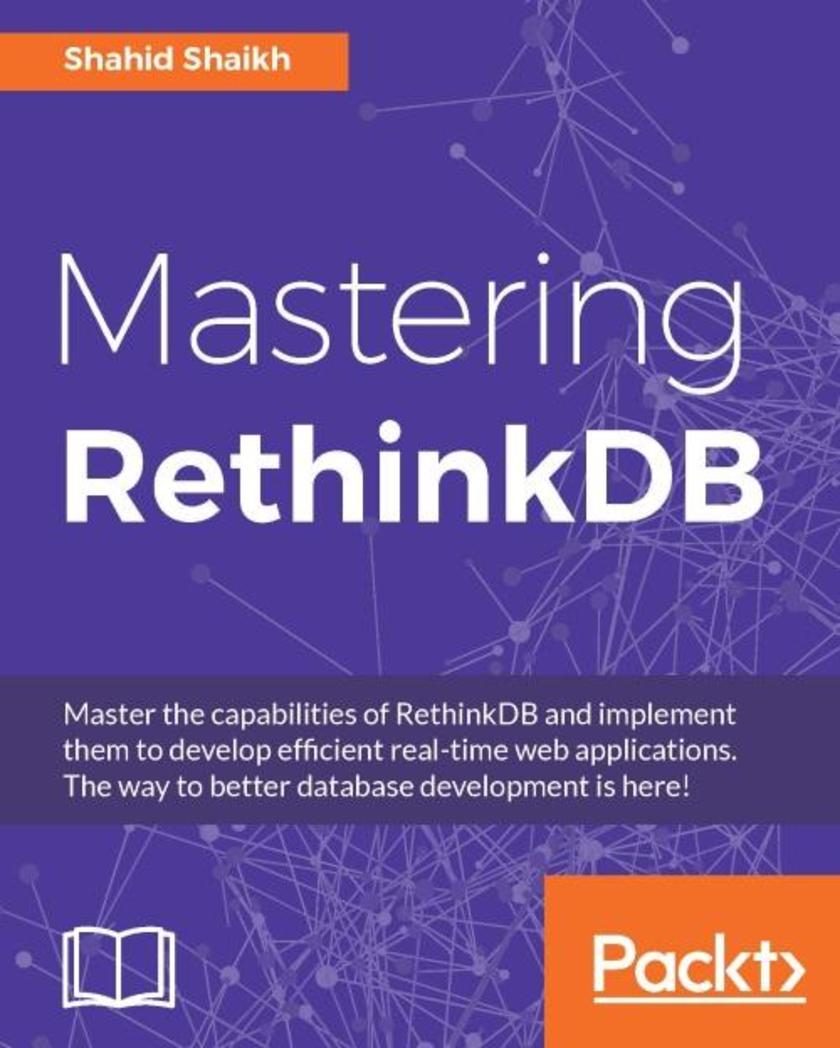
Mastering RethinkDB
¥80.65
Master the capabilities of RethinkDB and implement them to develop efficient real-time web applications. The way to better database development is here! About This Book Master the powerful ReQL queries to manipulate your JSON data, Learn how to develop scalable, real-time web applications using RethinkDB and Node.js and deploy them for production, A detailed, step-by-step guide to help you master the concepts of RethinkDB programming with ease Who This Book Is For This book caters to all the real-time application developers looking forward to master their skills using RethinkDB. A basic understanding of RethinkDB and Node.js is essential to get the most out of this book. What You Will Learn Master the web-based management console for data-center configuration (sharding, replication, and more), database monitoring, and testing queries. Run queries using the ReQL language Perform Geospatial queries (such as finding all the documents with locations within 5km of a given point). Deal with time series data, especially across various times zones. Extending the functionality of RethinkDB and integrate it with third party libraries such as ElasticSearch to enhance our search In Detail RethinkDB has a lot of cool things to be excited about: ReQL (its readable,highly-functional syntax), cluster management, primitives for 21st century applications, and change-feeds. This book starts with a brief overview of the RethinkDB architecture and data modeling, and coverage of the advanced ReQL queries to work with JSON documents. Then, you will quickly jump to implementing these concepts in real-world scenarios, by building real-time applications on polling, data synchronization, share market, and the geospatial domain using RethinkDB and Node.js. You will also see how to tweak RethinkDB's capabilities to ensure faster data processing by exploring the sharding and replication techniques in depth. Then, we will take you through the more advanced administration tasks as well as show you the various deployment techniques using PaaS, Docker, and Compose. By the time you have finished reading this book, you would have taken your knowledge of RethinkDB to the next level, and will be able to use the concepts in RethinkDB to develop efficient, real-time applications with ease. Style and approach This book is a unique blend of comprehensive theory and real-world examples to help you master RethinkDB.

TypeScript: Modern JavaScript Development
¥179.84
Leverage the features of TypeScript to boost your development skills and create captivating applications About This Book Learn how to develop modular, scalable, maintainable, and adaptable web applications by taking advantage of TypeScript Explore techniques to use TypeScript alongside other leading tools such as Angular 2, React, and Node.js Focusing on design patterns in TypeScript, this step-by-step guide demonstrates all the important design patterns in practice Who This Book Is For This Learning Path is for intermediate-level JavaScript developers who want to use TypeScript to build beautiful web applications and fun projects. No prior knowledge of TypeScript is required, but a basic understanding of jQuery is expected. This Learning Path is also for experienced TypeScript developers who want to take their skills to the next level, and also for web developers who wish to make the most of TypeScript. What You Will Learn Understand the key TypeScript language features and runtime Install and configure the necessary tools in order to start developing an application Create object-oriented code that adheres to the SOLID principles Develop robust applications with testing (Mocha, Chai, and SinonJS) Apply GoF patterns in an application with a testing approach Identify the challenges when developing an application Migrate JavaScript codebases to TypeScript to improve your workflow Utilize System.JS and Webpack to load *s and their dependencies Develop high performance server-side applications to run within Node.js In Detail TypeScript is an open source and cross-platform typed superset of JavaScript that compiles to plain JavaScript that runs in any browser or any host. TypeScript adds optional static types, classes, and modules to JavaScript, to enable great tooling and better structuring of large JavaScript applications. Through this three-module learning path, you’ll learn the ins-and-outs of TypeScript for building more robust software. The first module gets you started with TypeScript and helps you understand the basics of TypeScript and automation tools. Get a detailed de*ion of function, generics, callbacks, and promises, and discover the object-oriented features and memory management functionality of TypeScript. The next module starts by explaining the current challenges when designing and developing an application and how you can solve these challenges by applying the correct design pattern and best practices. You will be introduced to low-level programming concepts to help you write TypeScript code, as well as working with software architecture, best practices, and design aspects. The final module will help you build a complete single page app with Angular 2, create a neat mobile app using NativeScript, and even build a Pac Man game with TypeScript. As if the fun wasn't enough, you'll also find out how to migrate your legacy codebase from JavaScript to TypeScript. By the end of this Learning Path, you will be able to take your skills up a notch and develop full-fledged web applications using the latest features of the TypeScript. This Learning Path combines some of the best that Packt has to offer in one complete, curated package. It includes content from the following Packt products: Learning TypeScript by Remo H. Jansen TypeScript Design Patterns by Vilic Vane TypeScript Blueprints by Ivo Gabe de Wolff Style and approach This is a step-by-step, practical guide covering the fundamentals of TypeScript with practical examples. The end-to-end projects included in this book will give you ready-to-implement solutions for your business scenario, showcasing the depth and robustness of TypeScript.
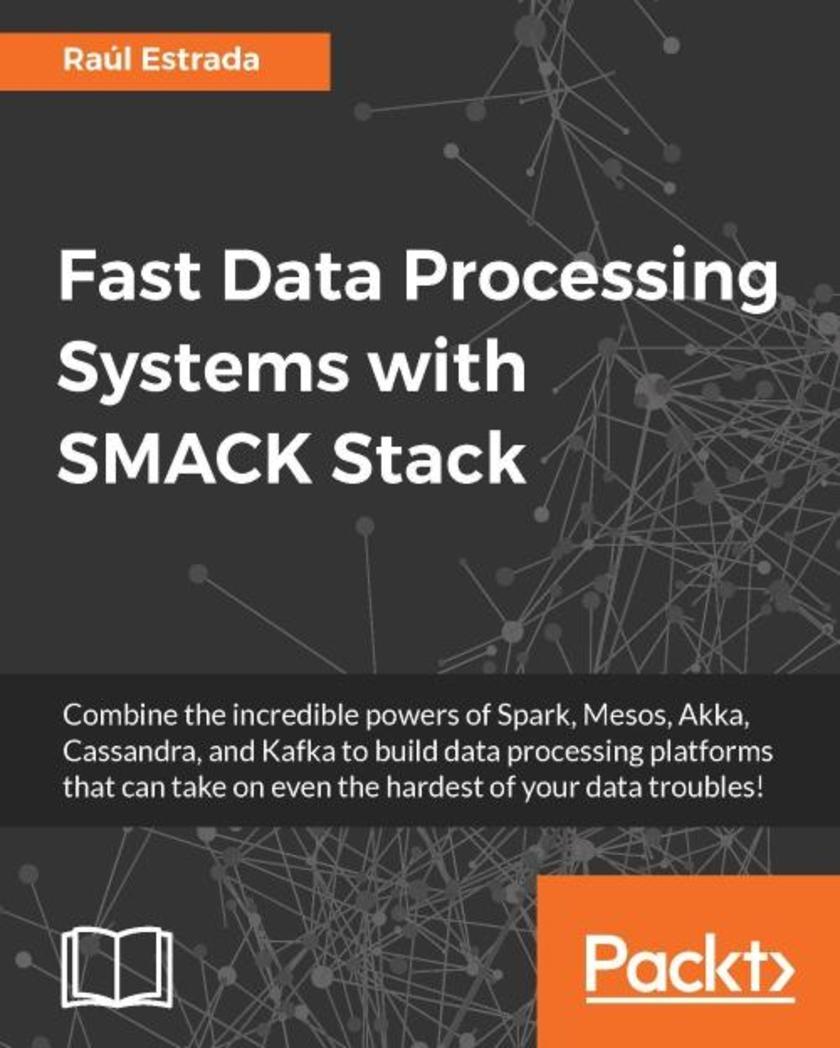
Fast Data Processing Systems with SMACK Stack
¥90.46
Combine the incredible powers of Spark, Mesos, Akka, Cassandra, and Kafka to build data processing platforms that can take on even the hardest of your data troubles! About This Book This highly practical guide shows you how to use the best of the big data technologies to solve your response-critical problems Learn the art of making cheap-yet-effective big data architecture without using complex Greek-letter architectures Use this easy-to-follow guide to build fast data processing systems for your organization Who This Book Is For If you are a developer, data architect, or a data scientist looking for information on how to integrate the Big Data stack architecture and how to choose the correct technology in every layer, this book is what you are looking for. What You Will Learn Design and implement a fast data Pipeline architecture Think and solve programming challenges in a functional way with Scala Learn to use Akka, the actors model implementation for the JVM Make on memory processing and data analysis with Spark to solve modern business demands Build a powerful and effective cluster infrastructure with Mesos and Docker Manage and consume unstructured and No-SQL data sources with Cassandra Consume and produce messages in a massive way with Kafka In Detail SMACK is an open source full stack for big data architecture. It is a combination of Spark, Mesos, Akka, Cassandra, and Kafka. This stack is the newest technique developers have begun to use to tackle critical real-time analytics for big data. This highly practical guide will teach you how to integrate these technologies to create a highly efficient data analysis system for fast data processing. We’ll start off with an introduction to SMACK and show you when to use it. First you’ll get to grips with functional thinking and problem solving using Scala. Next you’ll come to understand the Akka architecture. Then you’ll get to know how to improve the data structure architecture and optimize resources using Apache Spark. Moving forward, you’ll learn how to perform linear scalability in databases with Apache Cassandra. You’ll grasp the high throughput distributed messaging systems using Apache Kafka. We’ll show you how to build a cheap but effective cluster infrastructure with Apache Mesos. Finally, you will deep dive into the different aspect of SMACK using a few case studies. By the end of the book, you will be able to integrate all the components of the SMACK stack and use them together to achieve highly effective and fast data processing. Style and approach With the help of various industry examples, you will learn about the full stack of big data architecture, taking the important aspects in every technology. You will learn how to integrate the technologies to build effective systems rather than getting incomplete information on single technologies. You will learn how various open source technologies can be used to build cheap and fast data processing systems with the help of various industry examples
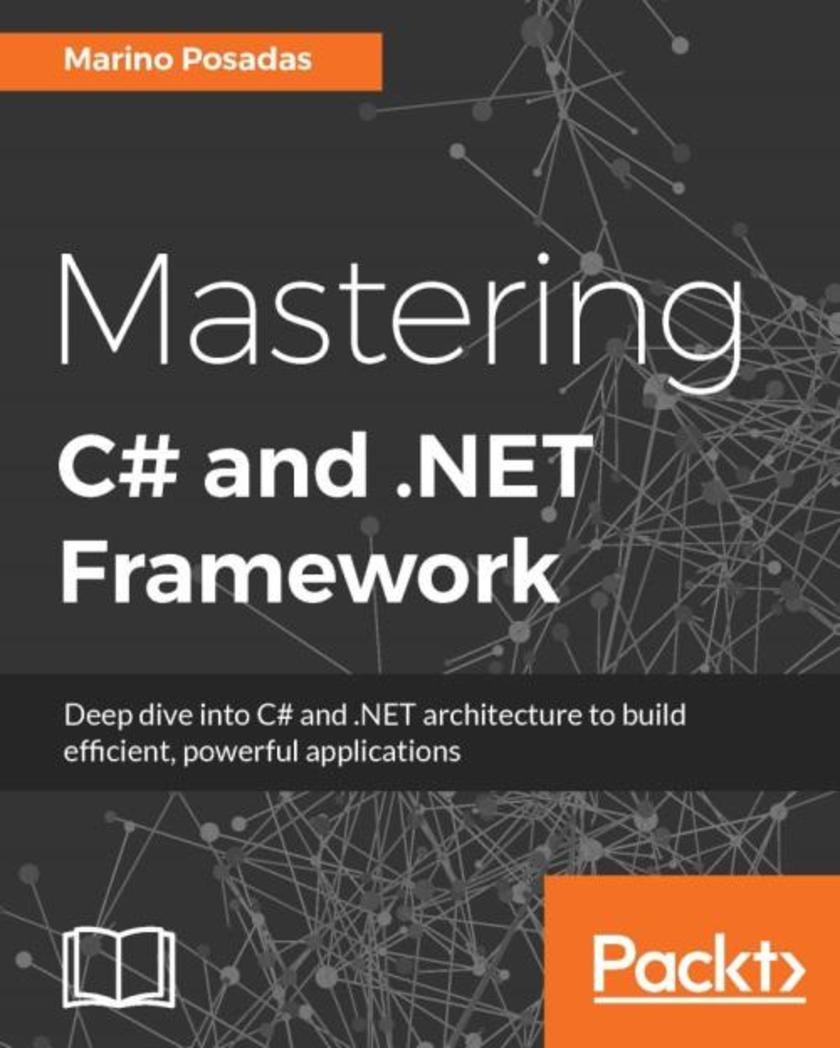
Mastering C# and .NET Framework
¥80.65
Deep dive into C# and .NET architecture to build efficient, powerful applications About This Book Uniquely structured content to help you understand what goes on under the hood of .NET’s managed code platform to master .NET programming Deep dive into C# programming and how the code executes via the CLR Packed with hands-on practical examples, you’ll understand how to write applications to make full use of the new features of .NET 4.6, .NET Core and C# 6/7 Who This Book Is For This book was written exclusively for .NET developers. If you’ve been creating C# applications for your clients, at work or at home, this book will help you develop the skills you need to create modern, powerful, and efficient applications in C#. No knowledge of C# 6/7 or .NET 4.6 is needed to follow along—all the latest features are included to help you start writing cross-platform applications immediately. You will need to be familiar with Visual Studio, though all the new features in Visual Studio 2015 will also be covered. What You Will Learn Understand C# core concepts in depth, from sorting algorithms to the Big O notation Get up to speed with the latest changes in C# 6/7 Interface SQL Server and NoSQL databases with .NET Apprehend SOLID principles and the most relevant GoF Patterns with practical examples in C# 6.0 Defend C# applications against attacks Use Roslyn, a self-hosted framework to compile and advanced edition in both C# and Visual basic .NET languages Discern LINQ and associated Lambda expressions, generics, and delegates Design a .NET application from the ground up Understand the internals of a .NET assembly Grasp some useful advanced features in optimization and parallelism In Detail Mastering C# and .NET Framework will take you in to the depths of C# 6.0/7.0 and .NET 4.6, so you can understand how the platform works when it runs your code, and how you can use this knowledge to write efficient applications. Take full advantage of the new revolution in .NET development, including open source status and cross-platform capability, and get to grips with the architectural changes of CoreCLR. Start with how the CLR executes code, and discover the niche and advanced aspects of C# programming – from delegates and generics, through to asynchronous programming. Run through new forms of type declarations and assignments, source code callers, static using syntax, auto-property initializers, dictionary initializers, null conditional operators, and many others. Then unlock the true potential of the .NET platform. Learn how to write OWASP-compliant applications, how to properly implement design patterns in C#, and how to follow the general SOLID principles and its implementations in C# code. We finish by focusing on tips and tricks that you'll need to get the most from C# and .NET. This book also covers .NET Core 1.1 concepts as per the latest RTM release in the last chapter. Style and approach This book uses hands-on practical code examples that will take you into the depths of C# and .NET. Packed with hands-on practical examples, it is great as a tutorial, or as a reference guide.
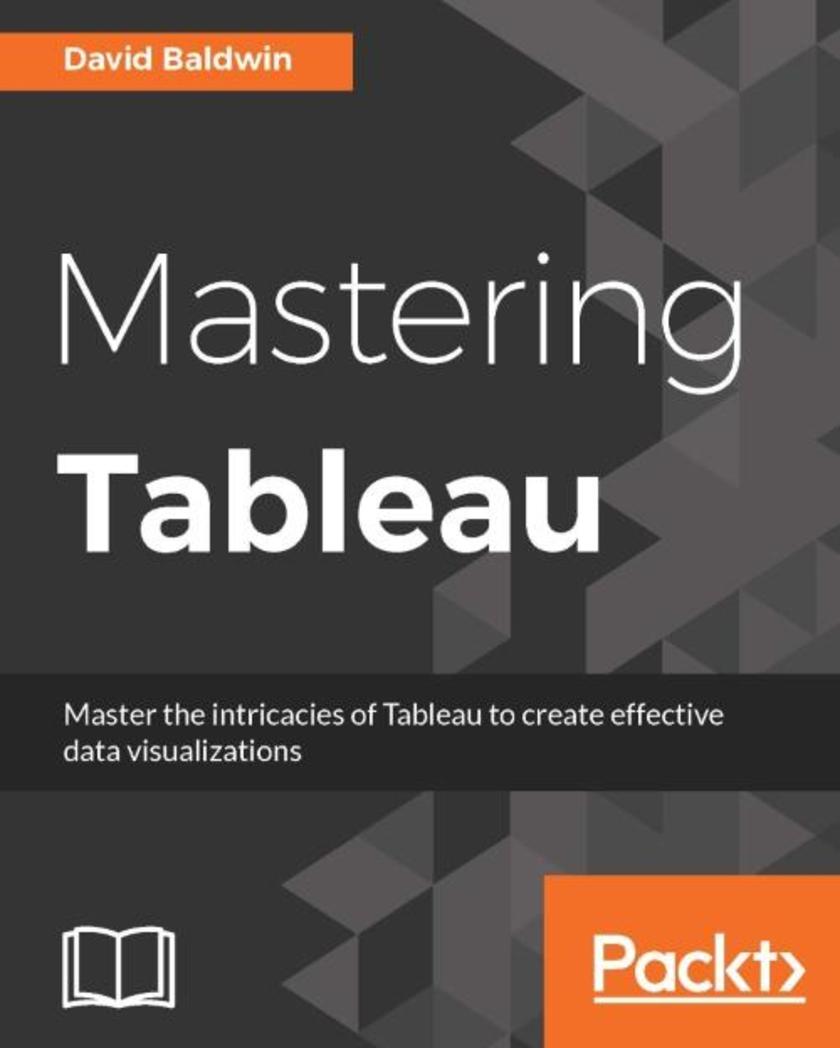
Mastering Tableau
¥90.46
Master the intricacies of Tableau to create effective data visualizations About This Book Arm yourself with an arsenal of advanced chart types and geocoding to efficiently and engagingly present information Map a grid over a network node diagram and use that grid to demonstrate loads, processing time, and more in Tableau Integrate R with Tableau by utilizing R functions, libraries, and saved models Who This Book Is For If you are a business analyst without developer-level programming skills, then this book is for you. You are expected to have at least a fundamental understanding of Tableau and basic knowledge of joins, however SQL knowledge is not assumed. You should have basic computer skills, including at least moderate Excel proficiency. What You Will Learn Create a worksheet that can display the current balance for any given period in time Recreate a star schema from in a data warehouse in Tableau Combine level of detail calculations with table calculations, sets, and parameters Create custom polygons to build filled maps for area codes in the USA Visualize data using a set of analytical and advanced charting techniques Know when to use Tableau instead of PowerPoint Build a dashboard and export it to PowerPoint In Detail Tableau has emerged as one of the most popular Business Intelligence solutions in recent times, thanks to its powerful and interactive data visualization capabilities. This book will empower you to become a master in Tableau by exploiting the many new features introduced in Tableau 10.0. You will embark on this exciting journey by getting to know the valuable methods of utilizing advanced calculations to solve complex problems. These techniques include creative use of different types of calculations such as row-level, aggregate-level, and more. You will discover how almost any data visualization challenge can be met in Tableau by getting a proper understanding of the tool’s inner workings and creatively exploring possibilities. You’ll be armed with an arsenal of advanced chart types and techniques to enable you to efficiently and engagingly present information to a variety of audiences through the use of clear, efficient, and engaging dashboards. Explanations and examples of efficient and inefficient visualization techniques, well-designed and poorly designed dashboards, and compromise options when Tableau consumers will not embrace data visualization will build on your understanding of Tableau and how to use it efficiently. By the end of the book, you will be equipped with all the information you need to create effective dashboards and data visualization solutions using Tableau. Style and approach This book takes a direct approach, to systematically evolve to more involved functionalities such as advanced calculation, parameters & sets, data blending and R integration. This book will help you gain skill in building visualizations previously beyond your capacity.
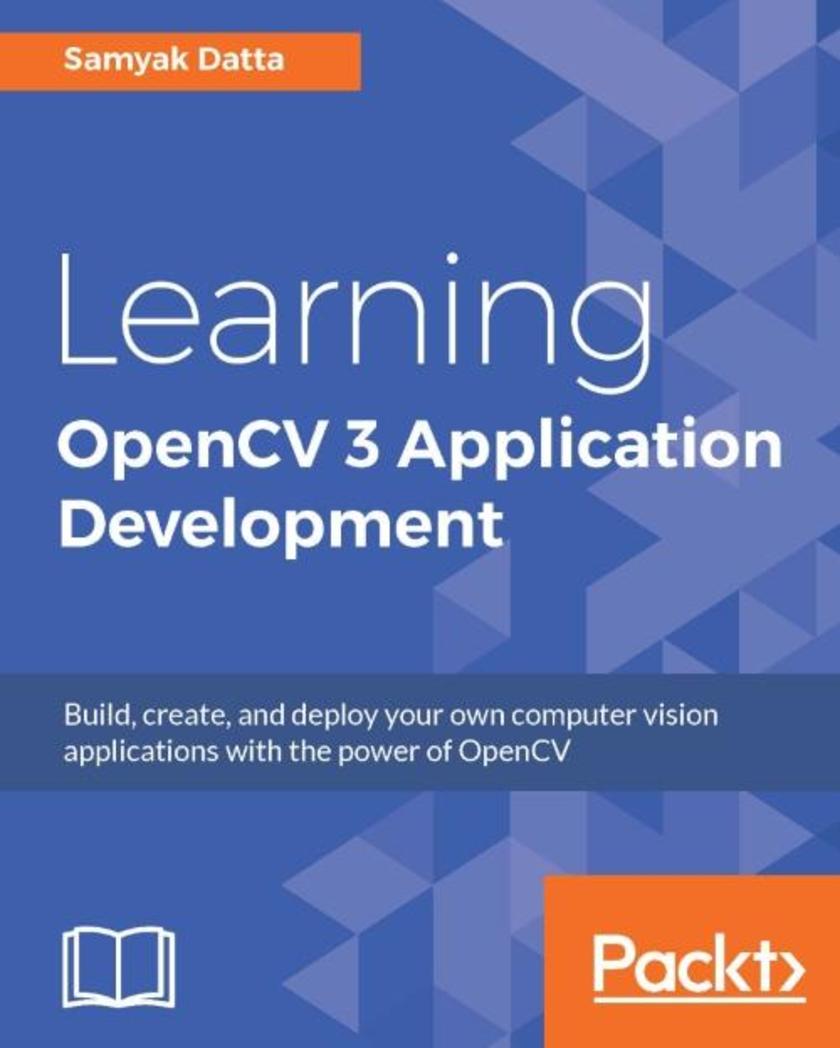
Learning OpenCV 3 Application Development
¥90.46
Build, create, and deploy your own computer vision applications with the power of OpenCV About This Book This book provides hands-on examples that cover the major features that are part of any important Computer Vision application It explores important algorithms that allow you to recognize faces, identify objects, extract features from images, help your system make meaningful predictions from visual data, and much more All the code examples in the book are based on OpenCV 3.1 – the latest version Who This Book Is For This is the perfect book for anyone who wants to dive into the exciting world of image processing and computer vision. This book is aimed at programmers with a working knowledge of C++. Prior knowledge of OpenCV or Computer Vision/Machine Learning is not required. What You Will Learn Explore the steps involved in building a typical computer vision/machine learning application Understand the relevance of OpenCV at every stage of building an application Harness the vast amount of information that lies hidden in images into the apps you build Incorporate visual information in your apps to create more appealing software Get acquainted with how large-scale and popular image editing apps such as Instagram work behind the scenes by getting a glimpse of how the image filters in apps can be recreated using simple operations in OpenCV Appreciate how difficult it is for a computer program to perform tasks that are trivial for human beings Get to know how to develop applications that perform face detection, gender detection from facial images, and handwritten character (digit) recognition In Detail Computer vision and machine learning concepts are frequently used in practical computer vision based projects. If you’re a novice, this book provides the steps to build and deploy an end-to-end application in the domain of computer vision using OpenCV/C++. At the outset, we explain how to install OpenCV and demonstrate how to run some simple programs. You will start with images (the building blocks of image processing applications), and see how they are stored and processed by OpenCV. You’ll get comfortable with OpenCV-specific jargon (Mat Point, Scalar, and more), and get to know how to traverse images and perform basic pixel-wise operations. Building upon this, we introduce slightly more advanced image processing concepts such as filtering, thresholding, and edge detection. In the latter parts, the book touches upon more complex and ubiquitous concepts such as face detection (using Haar cascade classifiers), interest point detection algorithms, and feature de*ors. You will now begin to appreciate the true power of the library in how it reduces mathematically non-trivial algorithms to a single line of code! The concluding sections touch upon OpenCV’s Machine Learning module. You will witness not only how OpenCV helps you pre-process and extract features from images that are relevant to the problems you are trying to solve, but also how to use Machine Learning algorithms that work on these features to make intelligent predictions from visual data! Style and approach This book takes a very hands-on approach to developing an end-to-end application with OpenCV. To avoid being too theoretical, the de*ion of concepts are accompanied simultaneously by the development of applications. Throughout the course of the book, the projects and practical, real-life examples are explained and developed step by step in sync with the theory.

Building VMware Software-Defined Data Centers
¥107.90
Make the most of software-defined data centers with revolutionary VMware technologies About This Book Learn how you can automate your data center operations and deploy and manage applications and services across your public, private, and hybrid infrastructure in minutes Drive great business results with cost-effective solutions without compromising on ease, security, and controls Transform your business processes and operations in a way that delivers any application, anywhere, with complete peace of mind Who This Book Is For If you are an IT professional or VMware administrator who virtualizes data centers and IT infrastructures, this book is for you. Developers and DevOps engineers who deploy applications and services would also find this book useful. Data center architects and those at the CXO level who make decisions will appreciate the value in the content. What You Will Learn Understand and optimize end-to-end processes in your data center Translate IT processes and business needs into a technical design Apply and create vRO workflow automation functionalities to services Deploy NSX in a virtual environment Technically accomplish DevOps offerings Set up and use vROPs to master the SDDC resource demands Troubleshoot all the components of SDDC In Detail VMware offers the industry-leading software-defined data center (SDDC) architecture that combines compute, storage, networking, and management offerings into a single unified platform. This book uses the most up-to-date, cutting-edge VMware products to help you deliver a complete unified hybrid cloud experience within your infrastructure. It will help you build a unified hybrid cloud based on SDDC architecture and practices to deliver a fully virtualized infrastructure with cost-effective IT outcomes. In the process, you will use some of the most advanced VMware products such as VSphere, VCloud, and NSX. You will learn how to use vSphere virtualization in a software-defined approach, which will help you to achieve a fully-virtualized infrastructure and to extend this infrastructure for compute, network, and storage-related data center services. You will also learn how to use EVO:RAIL. Next, you will see how to provision applications and IT services on private clouds or IaaS with seamless accessibility and mobility across the hybrid environment. This book will ensure you develop an SDDC approach for your datacenter that fulfills your organization's needs and tremendously boosts your agility and flexibility. It will also teach you how to draft, design, and deploy toolsets and software to automate your datacenter and speed up IT delivery to meet your lines of businesses demands. At the end, you will build unified hybrid clouds that dramatically boost your IT outcomes. Style and approach With the ever-changing nature of businesses and enterprises, having the capability to navigate through the complexities is of utmost importance. This book takes an approach that combines industry expertise with revolutionary VMware products to deliver a complete SDDC experience through practical examples and techniques, with proven cost-effective benefits.
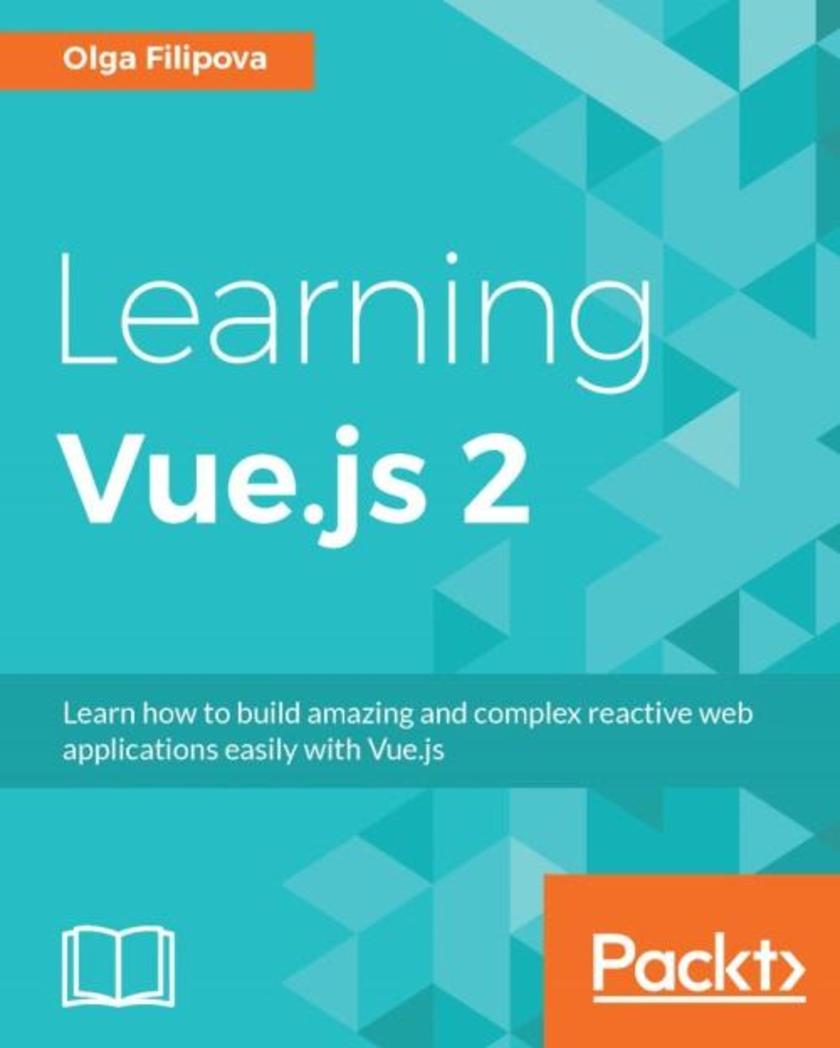
Learning Vue.js 2
¥80.65
Learn how to build amazing and complex reactive web applications easily with Vue.js About This Book Learn how to propagate DOM changes across the website without writing extensive jQuery callbacks code. Learn how to achieve reactivity and easily compose views with Vue.js and understand what it does behind the scenes. Explore the core features of Vue.js with small examples, learn how to build dynamic content into preexisting web applications, and build Vue.js applications from scratch. Who This Book Is For This book is perfect for novice web developer seeking to learn new technologies or frameworks and also for webdev gurus eager to enrich their experience. Whatever your level of expertise, this book is a great introduction to the wonderful world of reactive web apps. What You Will Learn Build a fully functioning reactive web application in Vue.js from scratch. The importance of the MVVM architecture and how Vue.js compares with other frameworks such as Angular.js and React.js. How to bring reactivity to an existing static application using Vue.js. How to use plugins to enrich your applications. How to develop customized plugins to meet your needs. How to use Vuex to manage global application’s state. In Detail Vue.js is one of the latest new frameworks to have piqued the interest of web developers due to its reactivity, reusable components, and ease of use. This book shows developers how to leverage its features to build high-performing, reactive web interfaces with Vue.js. From the initial structuring to full deployment, this book provides step-by-step guidance to developing an interactive web interface from scratch with Vue.js. You will start by building a simple application in Vue.js which will let you observe its features in action. Delving into more complex concepts, you will learn about reactive data binding, reusable components, plugins, filters, and state management with Vuex. This book will also teach you how to bring reactivity to an existing static application using Vue.js. By the time you finish this book you will have built, tested, and deployed a complete reactive application in Vue.js from scratch. Style and approach This book is a thorough, step-by-step guide showing readers how to build complete web apps with Vue.js. While teaching its intricacies, this book shows how to implement the MVVM architecture in the real world and build high-performing web interfaces.
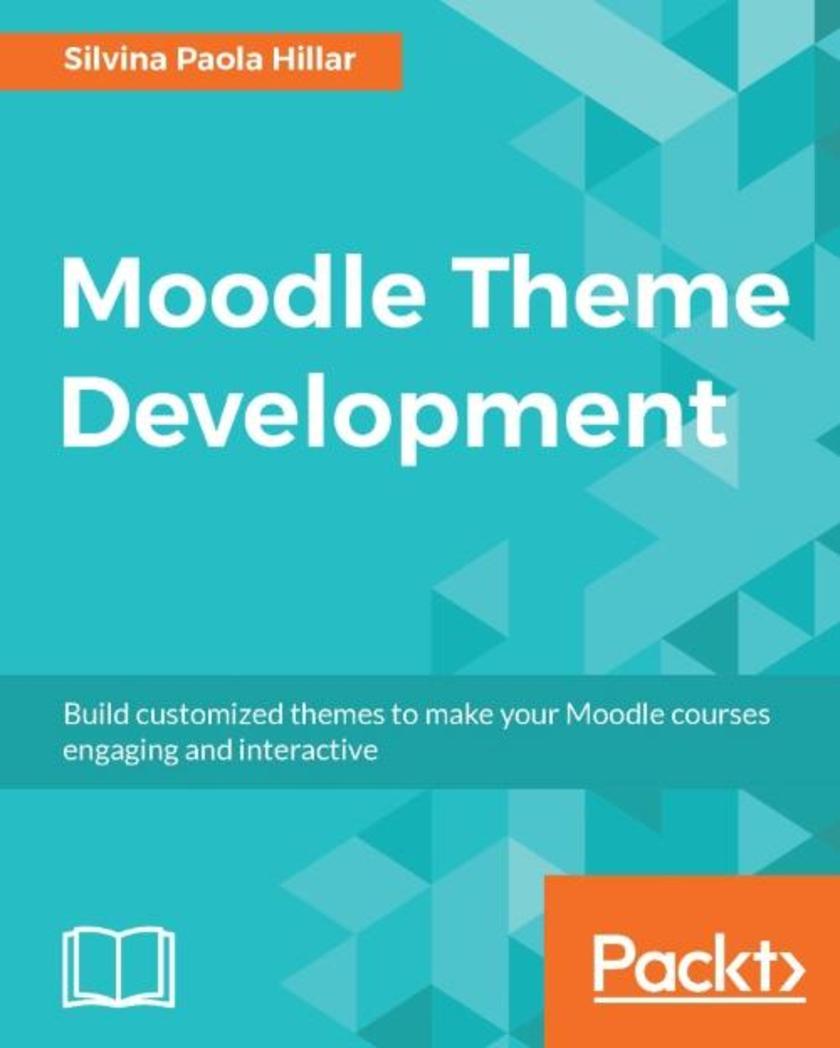
Moodle Theme Development
¥80.65
Build customized themes to make your Moodle courses engaging and interactive About This Book Leverage the power of Moodle 3 to create interactive and engaging themes for your courses Experience and integrate the power of Bootstrap and CSS into your Moodle app Implement your plans with illustrative examples to become a top notch designer Who This Book Is For If you are a Moodle administrator, developer, or designer and wish to enhance your Moodle site to make it visually attractive, then this book is for you. You should be familiar with web design techniques such as HTML and further experience with CSS would be helpful. What You Will Learn Plan a personalized Moodle theme from start to finish Install a Moodle theme in different operating systems and change Moodle’s theme settings Add your own customized logo and test your changes in several web browsers Customize the Moodle site to fit in with other elements such as websites and social networks, among others Create a design mock-up using graphics software Design themes that are capable of working with a huge number of different resolutions, screen sizes, screen orientations, and pixel densities Work with code to adjust the theme to users requirements Create new custom icons for your theme In Detail Theming is one of the main features of Moodle, and it can be used to customize your online courses and make them look exactly how you want them to,according to your target audience. If you have been looking for a book that will help you develop Moodle themes that you are proud of, and that your students will enjoy, then this is the book for you. We start off by introducing Moodle 3 and explaining what it is, how it works, and what tools you might need to create a stunning Moodle theme. We then show you how to choose and change the pre-installed Moodle themes in detailed steps, and explain what Moodle themes are and how they work. Next, we show you how to change an existing theme and test the changes that you have made. You can not only plan the customization of theme, but also tailor it using advanced Moodle theming processes; this book is your one-stop guide to creating your own personalized Moodle 3 theme. Style and approach This book acts as a comprehensive guide which helps you to create visually stunning and responsive themes to add that extra edge to your Moodle apps.
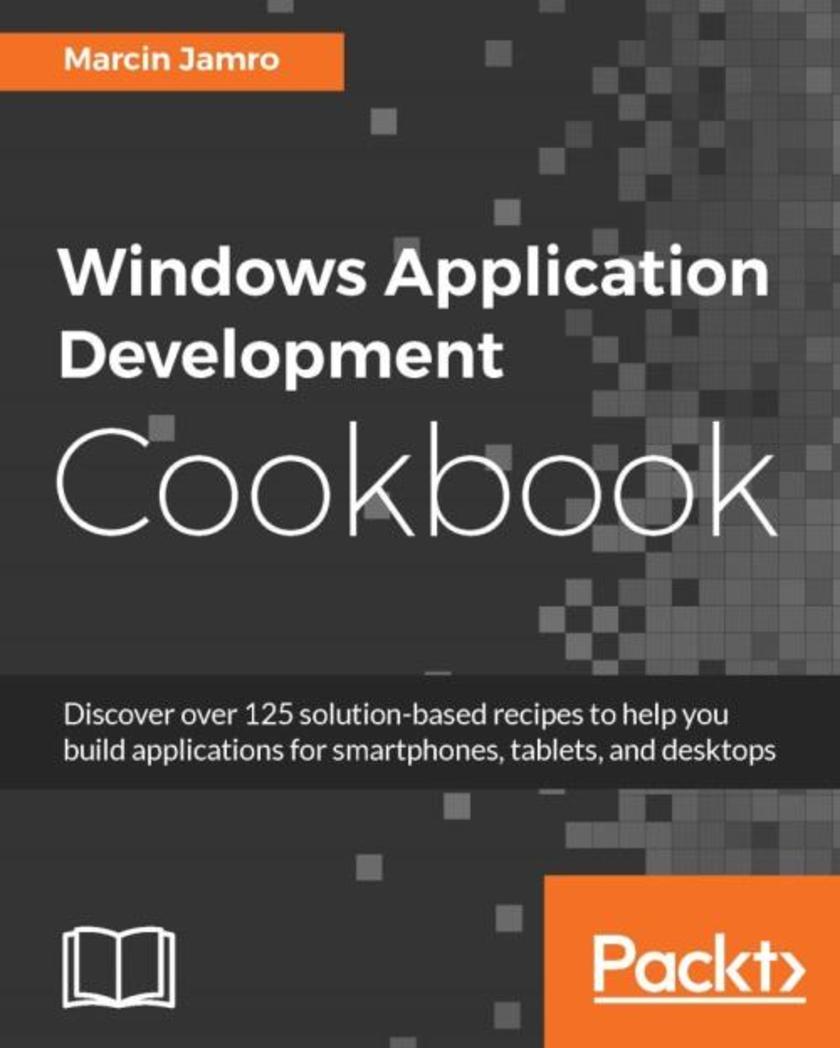
Windows Application Development Cookbook
¥90.46
Discover over 125 solution-based recipes to help you build applications for smartphones, tablets, and desktops About This Book Learn to build applications for Windows 10, the latest Windows version Develop your applications to be compatible with smartphones, tablets, and desktops This guide is packed with recipes covering major solutions to day-to-day problems faced by Windows programmers Who This Book Is For The book is dedicated to programmers with various experience of developing applications for Windows-based smartphones, tablets, and desktops—even beginners can find suitable content. What You Will Learn Start developing universal applications for Windows 10 Design user interface in the XAML language Use the MVVM design pattern with data binding Store data in files and in a database Use multimedia content and animations Capture data from built-in sensors Handle various Internet-based scenarios Test the application and submit it to the Windows Store In Detail Need to ensure you can always create the best Windows apps regardless of platformWhat you need are solutions to the biggest issues you can face, so you can always ensure you’re making the right choices and creating the best apps you can. The book starts with recipes that will help you set up the integrated development environment before you go ahead and design the user interface. You will learn how to use the MVVM design pattern together with data binding, as well as how to work with data in different file formats. Moving on, you will explore techniques to add animations and graphics to your application, and enable your solution to work with multimedia content. You will also see how to use sensors, such as an accelerometer and a compass, as well as obtain the current GPS location. You will make your application ready to work with Internet-based scenarios, such as composing e-mails or downloading files, before finally testing the project and submitting it to the Windows Store. By the end of the book, you will have a market-ready application compatible across different Windows devices, including smartphones, tablets, and desktops. Style and approach This quick-start book takes a cookbook format with recipes covering more than 125 solutions to help you create and build applications for Windows 10. The examples presented in the book use the free integrated development environment. A supporting set of codes that present solutions to problems described in particular chapters is available as well.
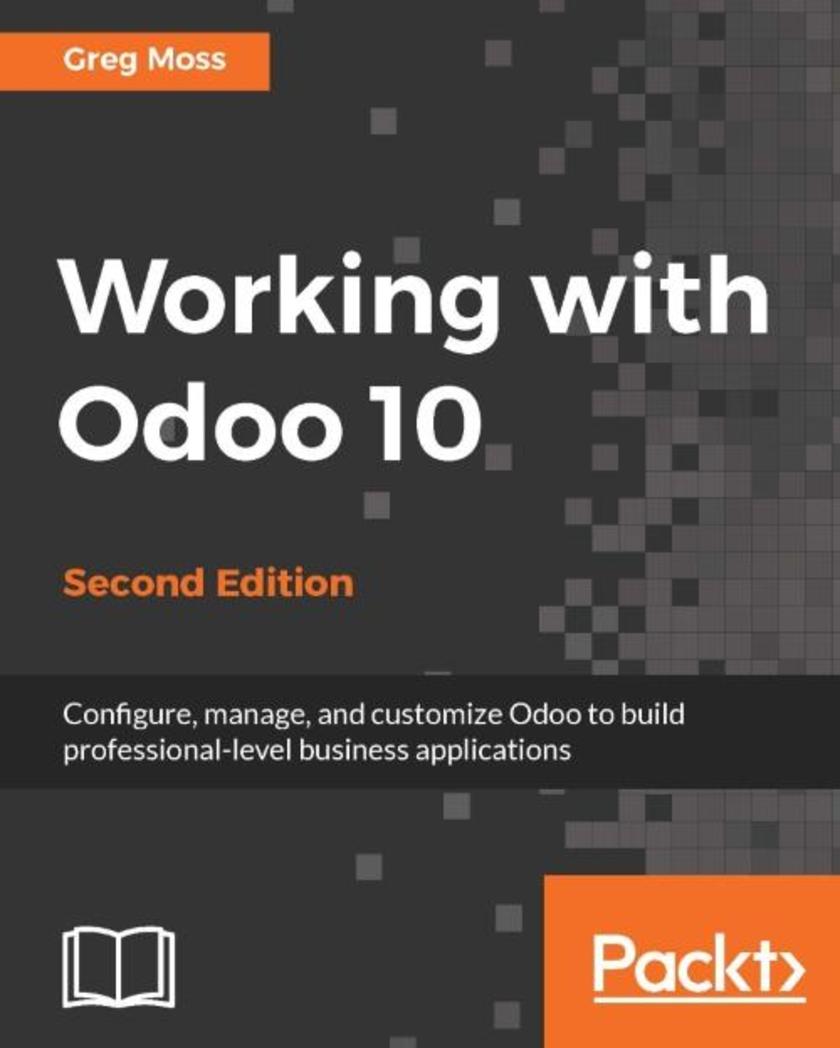
Working with Odoo 10 - Second Edition
¥90.46
Configure, manage, and customize Odoo to build professional-level business applications About This Book Build an Odoo module and integrate it with other platforms through this practical guide This book is the perfect companion to help you customize your Odoo installations for your enterprise requirements Use project management along with analytics for better reporting Who This Book Is For This book is for those who have not used Odoo before, allowing you to learn advanced-level features with Odoo such as creating your own custom modules. You do not need any knowledge of Odoo. What You Will Learn Configure a functioning customer relationship management system Set up a purchasing and receiving system Implement manufacturing operations and processes using real-world examples Discover the capabilities of Odoo's financial accounting and reporting features Integrate powerful human resource applications Utilize Odoo's project management application to organize tasks Customize Odoo without writing a line a code In Detail Odoo is a comprehensive set of open-source enterprise management applications. Now with Odoo 10, you have access to a powerful website builder, integrated e-commerce features, and a fast-growing community to help transform and modernize your business. You will start with how to set up Odoo online and on your own server. You’ll then configure the basic company settings required to quickly getting your first Odoo system up and running. Later you’ll explore Customer Relationship Management in Odoo and and their importance in today's modern business environment. Next we will deep dive into purchasing application with Odoo and learn some of the primary functionalities of ERP systems for manufacturing operations. You will then use analytic accounting to provide better reporting. Finally you will walk through the recent Odoo 10 features with respect to the community and enterprise edition giving you complete understanding of what Odoo can do for you no matter the reason! Style and approach This fast-paced, step-by-step guide will show you everything you need to know about the Odoo module ecosystem through practical and real-world examples.
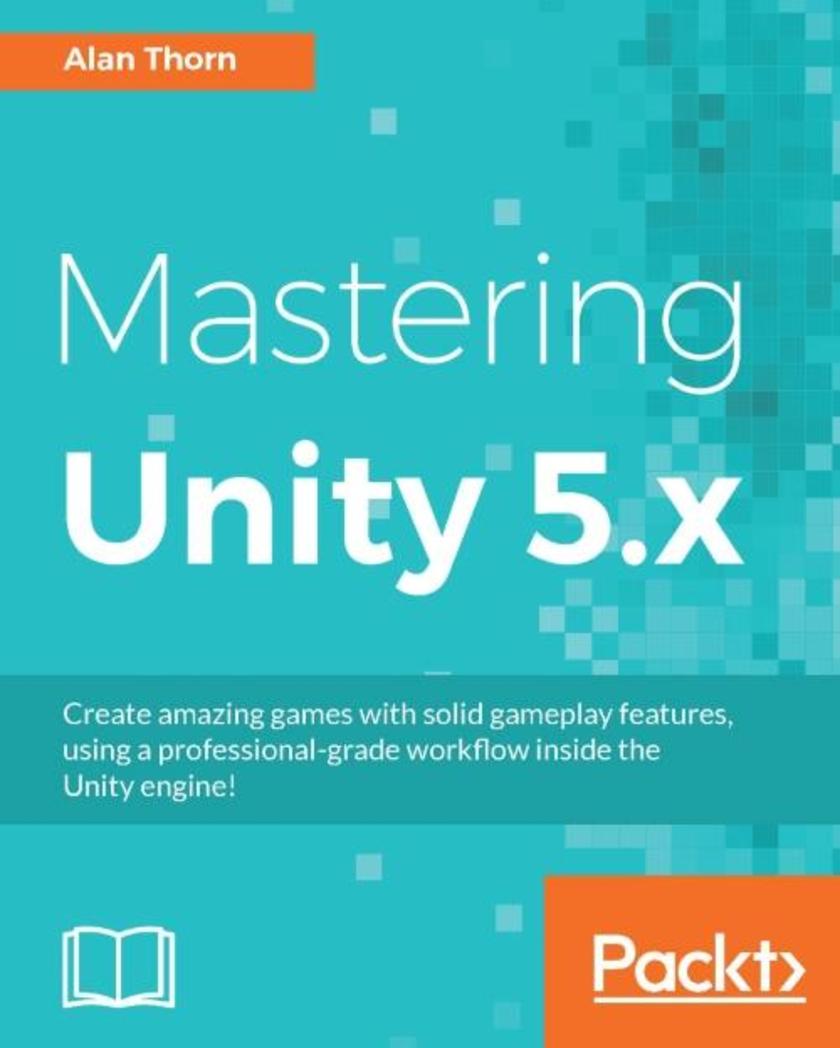
Mastering Unity 5.x
¥90.46
Create amazing games with solid gameplay features, using a professional-grade workflow inside the Unity engine! About This Book Become a Unity master by creating a practical, in-depth game-development project with Unity Use advanced C# *ing to unlock the complete potential of Unity 5 Use Version Control to Effectively Manage and Scale your workflow Who This Book Is For If you are a Unity developer who now wants to develop and deploy interesting games by leveraging the new features of Unity 5.x, then this is the book for you. Basic knowledge of C# programming is assumed. What You Will Learn Explore hands-on tasks and real-world scenarios to make a Unity horror adventure game Create enemy characters that act intelligently and make reasoned decisions Use data files to save and restore game data in a way that is platform-agnostic Get started with VR development Use Navigation Meshes, Occlusion Culling, and the Profiler tools Work confidently with GameObjects, Rotations, and Transformations Understand specific gameplay features such as AI enemies, inventory systems, and level design In Detail Do you want to take the leap from being an everyday Unity developer to being a pro game developerThen look no further! This book is your one stop solution to creating mesmerizing games with lifelike features and amazing gameplay. This book takes an in-depth focus on a practical project with Unity, building a first-person game with many features. You’ll dive deep into the architecture of a Unity game, creating expansive worlds, interesting render effects, and other features to make your games special. You will create individual game components, use efficient animation techniques, and implement collision and physics effectively. Specifically, we’ll explore optimal techniques for importing game assets, such as meshes and textures; tips and tricks for effective level design; how to animate and * NPCs; how to configure and deploy to mobile devices; how to prepare for VR development; and how to work with version control, and more. By the end of this book, you’ll have developed sufficient competency in Unity development to produce fun games with confidence. Style and approach This book takes a step-by-step, practical tutorial approach. You will create an advanced level Unity game with an emphasis on leveraging the advanced Unity 5 features. You will make the most of the Unity 5 advanced features while you develop the game in its entirety.
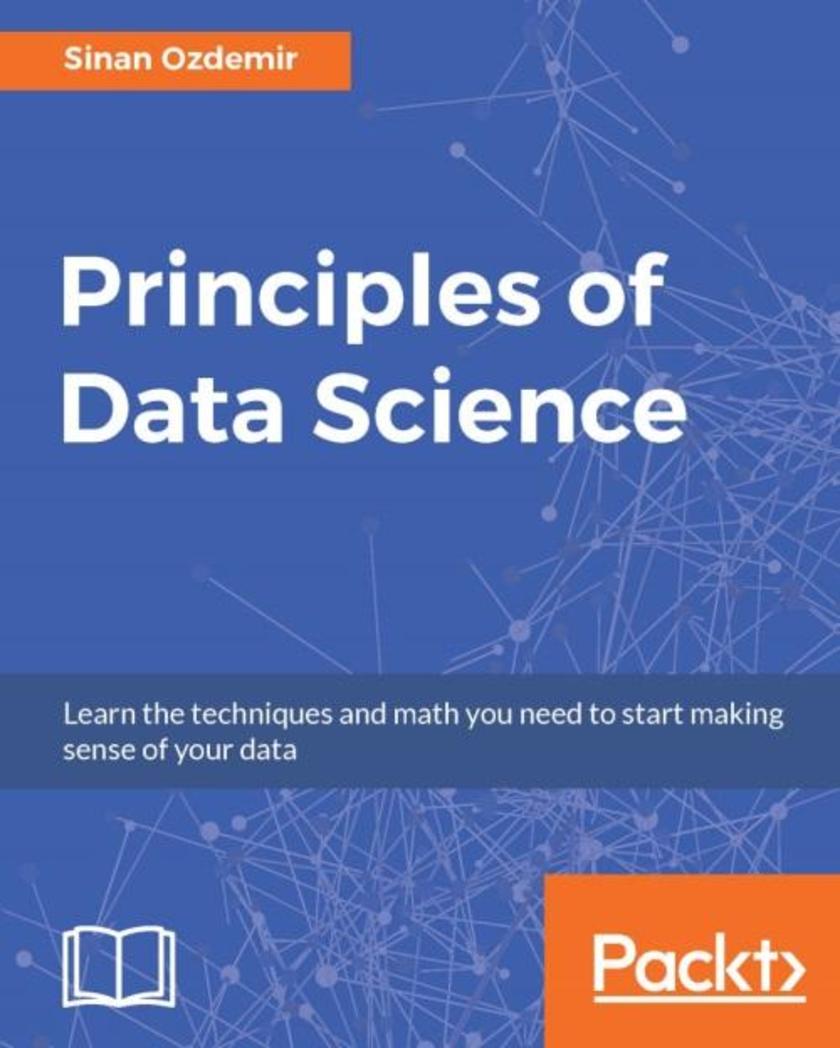
Principles of Data Science
¥80.65
Learn the techniques and math you need to start making sense of your data About This Book Enhance your knowledge of coding with data science theory for practical insight into data science and analysis More than just a math class, learn how to perform real-world data science tasks with R and Python Create actionable insights and transform raw data into tangible value Who This Book Is For You should be fairly well acquainted with basic algebra and should feel comfortable reading snippets of R/Python as well as pseudo code. You should have the urge to learn and apply the techniques put forth in this book on either your own data sets or those provided to you. If you have the basic math skills but want to apply them in data science or you have good programming skills but lack math, then this book is for you. What You Will Learn Get to know the five most important steps of data science Use your data intelligently and learn how to handle it with care Bridge the gap between mathematics and programming Learn about probability, calculus, and how to use statistical models to control and clean your data and drive actionable results Build and evaluate baseline machine learning models Explore the most effective metrics to determine the success of your machine learning models Create data visualizations that communicate actionable insights Read and apply machine learning concepts to your problems and make actual predictions In Detail Need to turn your skills at programming into effective data science skillsPrinciples of Data Science is created to help you join the dots between mathematics, programming, and business analysis. With this book, you’ll feel confident about asking—and answering—complex and sophisticated questions of your data to move from abstract and raw statistics to actionable ideas. With a unique approach that bridges the gap between mathematics and computer science, this books takes you through the entire data science pipeline. Beginning with cleaning and preparing data, and effective data mining strategies and techniques, you’ll move on to build a comprehensive picture of how every piece of the data science puzzle fits together. Learn the fundamentals of computational mathematics and statistics, as well as some pseudocode being used today by data scientists and analysts. You’ll get to grips with machine learning, discover the statistical models that help you take control and navigate even the densest datasets, and find out how to create powerful visualizations that communicate what your data means. Style and approach This is an easy-to-understand and accessible tutorial. It is a step-by-step guide with use cases, examples, and illustrations to get you well-versed with the concepts of data science. Along with explaining the fundamentals, the book will also introduce you to slightly advanced concepts later on and will help you implement these techniques in the real world.




 购物车
购物车 个人中心
个人中心



